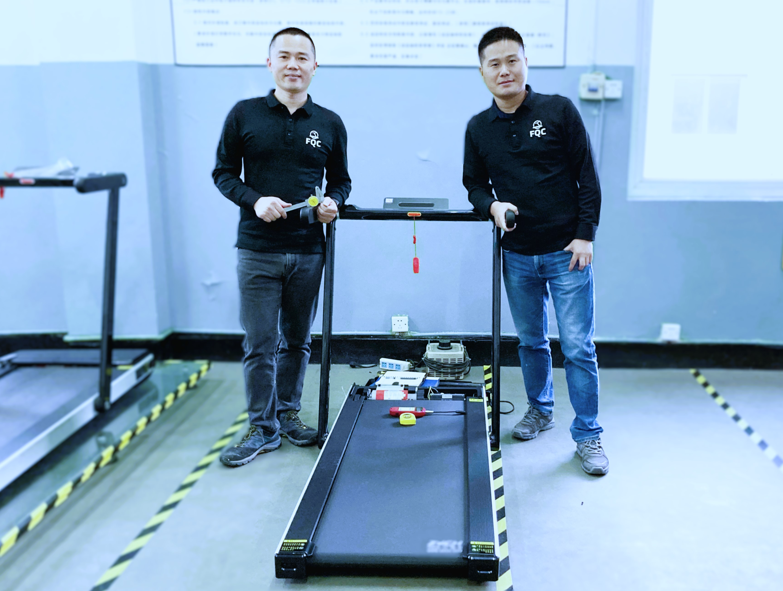When Smart Fitness Equipment “Fails Offline”: Is Echelon’s Lockdown on Third-Party Access a Battle for Control or a Step Back in User Experience?
- Roger Yao
- Jul 27
- 4 min read

In July 2025, a routine firmware update triggered widespread controversy and discusssion across the connected fitness equipment industry.
Echelon, an U.S.-based smart fitness equipment brand, quietly rolled out a critical software update. After installation, users discovered that their connected bikes, treadmills, and rowers could no longer function offline.
All devices now require an active internet connection to log into Echelon's servers and receive a temporary decryption key to unlock operation. Without this server handshake, the equipment is effectively non-functional—even for basic free training, Bluetooth pairing, or viewing workout metrics like speed and resistance.
At the same time, third-party applications such as QZ (qdomyos-zwift), which previously allowed Echelon devices to connect with open platforms like Zwift, Peloton, and Kinomap, were completely blocked. Users could no longer access or control their equipment through any non-Echelon app.

This update quickly sparked debate—touching on user rights, business models, product ownership, and the broader future of IoT fitness technology.
The Past: Openness Drove Engagement—QZ Became a Vital Bridge
QZ, an app developed in 2020 by Italian programmer Roberto Viola, was designed to unlock compatibility with closed-source fitness devices. It enabled users to connect their machines to third-party platforms such as Kinomap and Zwift for a richer and more customizable workout experience.
Viola, an independent developer rather than a corporate-backed engineer, built QZ with the intent of empowering users to exercise the way they wanted. Over the past five years, QZ became an essential tool for many Echelon owners, adding tremendous value to the brand’s hardware by expanding its use cases.
From the user perspective, this kind of “open integration” meant convenience, freedom, and long-term usability. From the manufacturer’s side, it arguably contributed to increased hardware sales—many users openly admitted they chose Echelon specifically because of QZ compatibility.
The Present: Server Handshake Requirements Change Everything
The core technical change in the July 2025 update was simple but consequential: all devices must now complete a real-time authentication handshake with Echelon’s cloud servers during startup. Without it, devices are locked.
The implications are significant:
Offline functionality is completely disabled
Third-party app compatibility is severed
All operations depend on cloud access
If Echelon’s servers go offline, devices may become permanently unusable
Downgrading to earlier firmware versions is not supported
This echoes concerns seen in other IoT sectors. Similar disruptions have occurred when cloud-dependent platforms shut down—such as Hive smart home products, Insteon hubs, or VanMoof’s connected bikes.

A Collision of Stakeholder Interests: Users, Developers, and the Manufacturer
📌 User Perspective: Seeking Control and Long-Term Usability
Many Echelon users took to blogs and social media to express frustration and disappointment. Their concerns include:
Redefined ownership – Equipment once usable offline now requires server-based permission to operate
Loss of connectivity freedom – Users can no longer access familiar platforms like Zwift or Kinomap
Uncertainty about the future – If Echelon changes strategy or ceases operations, the device could become obsolete
Lack of transparency – Firmware updates were rolled out without clear warnings or options to retain legacy versions
📌 Developer Perspective: Advocating for Technological Openness
In a blog post, QZ creator Roberto Viola clarified that he is not asking for proprietary source code or a business partnership. Rather, he proposed that Echelon devices retain secure local communication capabilities, so users can pair with phones or tablets and perform basic workouts—even without internet access.
Viola emphasized that QZ was not created to undermine any business, but to expand user choice and enhance value for device owners. He is currently collaborating with the open-source community to develop an alternative controller for devices affected by the firmware update—a project that has garnered attention across tech forums.
📌 Manufacturer Perspective: Reinforcing the Subscription Model and Ecosystem Control
As of now, Echelon has not made a public statement regarding the update. However, based on industry dynamics, the strategic motivations likely include:
Boosting subscription conversion – Echelon’s app subscriptions are a key revenue stream. Open access to third-party apps may divert potential subscribers
Enhancing user data acquisition – Mandatory cloud login allows for deeper data collection, fueling analytics, personalization, and marketing
Reducing support complexity and risk exposure – By controlling which apps and systems can access their devices, Echelon can better manage quality assurance and system security
From this viewpoint, Echelon follows the broader tech industry trend: transforming hardware into an access point for paid ecosystems rather than a standalone product.
The Core Issue: Does Ownership Include Operational Autonomy?
This debate transcends technical questions and leads to a more philosophical one: What does it mean to own a smart device in the digital age?
When users buy hardware, do they gain the right to operate it however they wish?
Do manufacturers retain the authority to alter functionality post-sale?
Can there be a fair balance between platform integrity and consumer freedom?
Similar tensions are rising across other smart device categories. From smart speakers to kitchen appliances to connected vehicles, more products are becoming subscription-driven and platform-dependent.
In the case of fitness equipment, the stakes are particularly high: these devices represent long-term investments in personal health. If the norm becomes “no cloud, no function,” consumer trust and brand loyalty could erode rapidly.

Roger & Carl at Treadmill Factory
Key Questions for the Industry to Reflect On
This episode with Echelon should serve as a prompt for broader industry reflection. Questions worth asking include:
Should online connectivity be a value-added feature rather than a mandatory requirement?
Should all smart fitness equipment include a basic offline mode by default?
Is there a need for transparent use-rights agreements that prevent post-sale function restrictions?
Can third-party ecosystems and official platforms coexist instead of competing?
From my perspective as an industry observer, the sustainable growth of the smart fitness sector hinges on whether brands can strike a new balance—between monetization strategies and user trust.
Final Thought
This is not merely a debate over hardware vs. software, or apps vs. devices—it is a real-world clash over where control lies in the connected age.
As we pursue “smart fitness,” with brighter screens, smarter AI, and more immersive content, perhaps we should also ask:Who truly owns the equipment we bring into our homes?
It’s a question likely to resurface with every future firmware update.








Comments